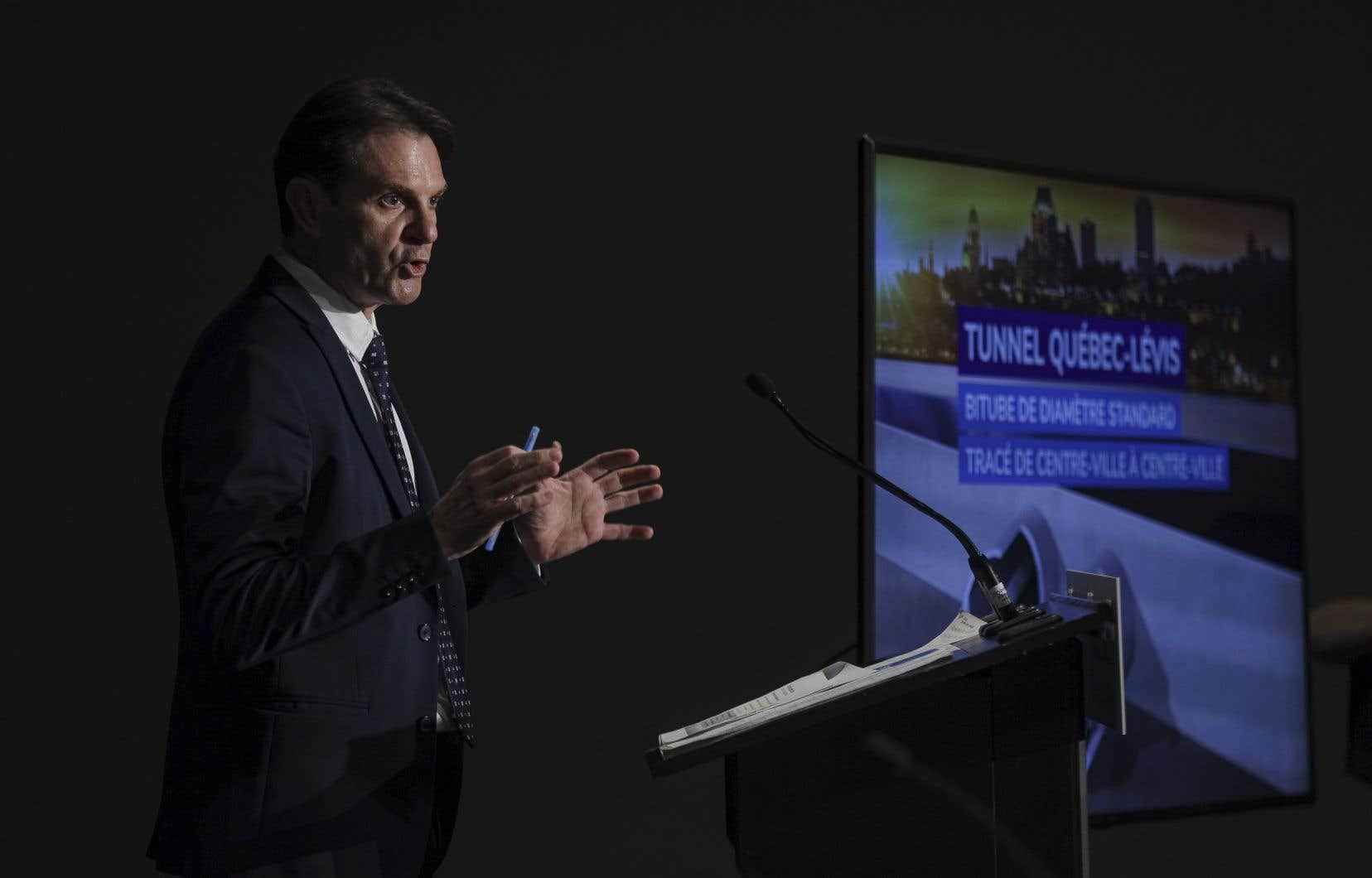The third highway link currently planned between Quebec and Lévis “is in no way compatible” with Quebec’s climate objectives, according to an environmental study carried out by Équiterre based on “the few documents available. »
In the absence of government studies at hand, the ecological organization, a member of the “No to the third link” collective, conducted an analysis based on “major principles on which there is consensus in terms of ecological transition. » Équiterre and the PIRESS – or Integrated Center for Environment, Health and Society Research – evaluate the twin-tube according to four criteria, namely the mitigation of greenhouse gas emissions, adaptation to climate change, justice social and good governance.
” The results […]| are unequivocal: the third link fails with a score of 24 out of 75, or 32%,” writes Équiterre. According to the organization, the link would increase road traffic and promote urban sprawl. The construction of the twin-tube would generate significant quantities of pollutants, explains the report, in addition to clearing enormous mounds of rubble. The first version of the tunnel, 20 m wide, would have released “at least 2.5 million cubic meters”, calculates the study, or enough to “cover two lanes of Highway 20 with 1.3 m of waste between Quebec and Montreal. »
The economic benefits of the project are far from certain, the report continues. Congestion would experience only a temporary respite, and the cost, estimated at 6.5 billion dollars by the government, could well explode since “tunnels generally see their cost increased by 35% on average. Exceeding deadlines for this type of project is more “the rule than the exception”, adds Équiterre, recalling in passing that “in Quebec, each dollar spent on car travel by an individual costs 9.20 to the society. »
The analysis gives a score of 22% to the governance surrounding the project. “The lack of opportunity and feasibility studies and analyzes of traffic needs and projections is decried by hundreds of specialists and scientists, deplores Équiterre. This shows a lack of rigor and transparency in the management of this file. [qui] seems more like electioneering. »
Coming congestion
Last spring, the Coalition avenir Québec argued that by 2036, 36,800 additional trips between shores would worsen traffic, which has increased by more than 20% in nearly 20 years on the two current aging bridges.
The CAQ estimates that in about ten years, 143,000 vehicles per day will cross the Pierre-Laporte bridge, whereas it was designed for a daily flow of 90,000 vehicles and 126,000 are recorded per day.
The current wait time on the Pierre-Laporte Bridge is 20 minutes on average, according to the Ministry of Transport, which calculates that it will climb to 28.2 minutes in 2040.
First resurrected by Liberal troops under Premier Philippe Couillard, the third link, a project discussed for decades in the Quebec region, was at the heart of the CAQ’s electoral platform during the 2018 election. The party promised to raise a first shovelful of ground before the end of its mandate. Preparatory work has been underway since this summer in Lévis, in the wake of the widening of Highway 20 at the height of the city center.
The Prime Minister recently ruled out the possibility of presenting the studies available to the government before the election deadline. According to François Legault, these are no longer up to date since telework has changed travel habits.
All parties have taken positions on the third link. The Parti Québécois favors an under-river tunnel, but only dedicated to public transport. The Liberal Party, for its part, proposes to extend the tramway envisaged in Quebec to Lévis. The Conservative Party prefers to erect a bridge that would pass through the west of Île d’Orléans. Quebec solidaire, finally, promises an SRB that would go through the Quebec Bridge and the expansion of the tramway to reduce the car fleet.
